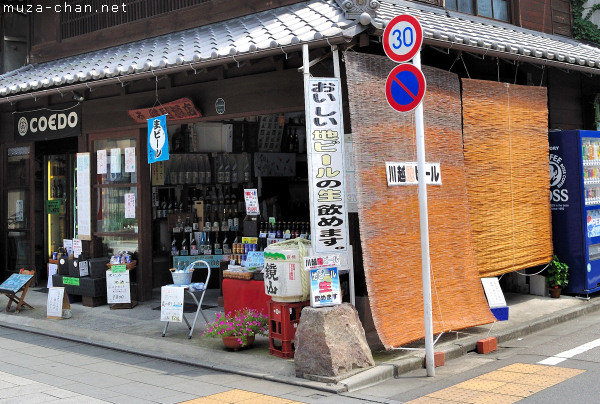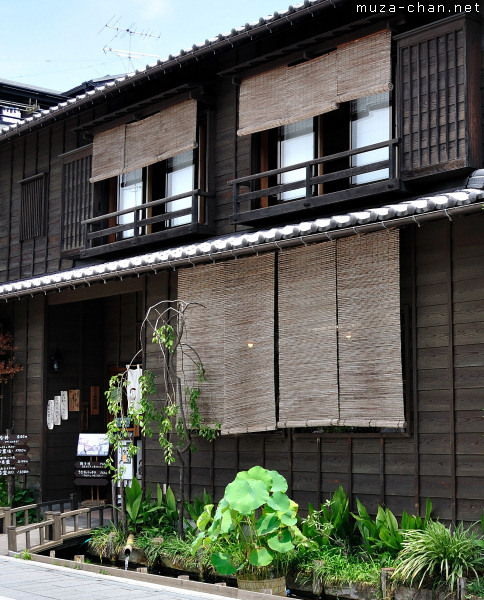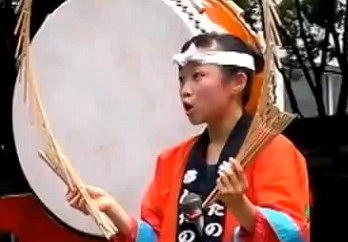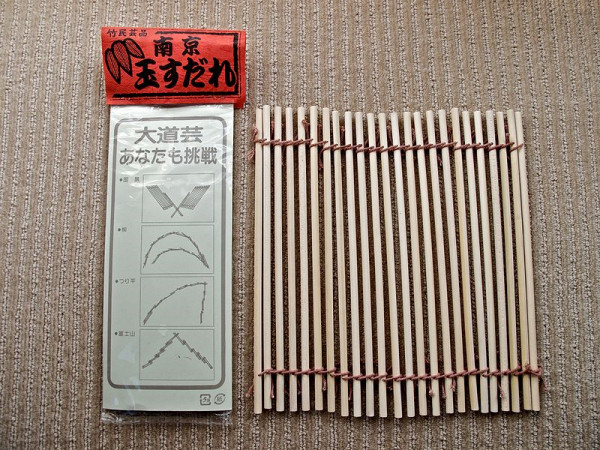Street performances are a regular sight in Japan ever since the Edo period. Performances of taiko, shamisen, circus or illusionist spectacles are still a common place, but some traditional types of street performance are almost forgotten - one of them is the art of Nankin Tamasudare
The name meaning is forgotten (it can mean a flower or a wondrous sudare), but two things are known: The play is not related to the Chinese town (the “Nankin” part was attached to the name just to make it sound exotic), and sudare comes from a screen used at traditional Japanese houses for protection against sun or rain.
Sudare is made of bamboo or wood strips, tied together with strings:

Shop with sudare

House using sudare
So, what is Nankin Tamasudare?
At Nankin Tamasudare performances, skilled artists use a small size sudare to form various kind of shapes, through twisting, folding or stretching…
During the performance, the artist chants a rhythmic song, to explain the shapes created. The most popular shapes are a fishing rod (of Urashima Taro), a floating sail, a willow, Buddha’s hallow, Japan’s flag, an arched bridge or, of course, Fuji-san…
A number of good recordings with Nankin Tamasudare are available, here’s a selection of the best I found:
… and a clip less traditional, but no less entertaining: :)



